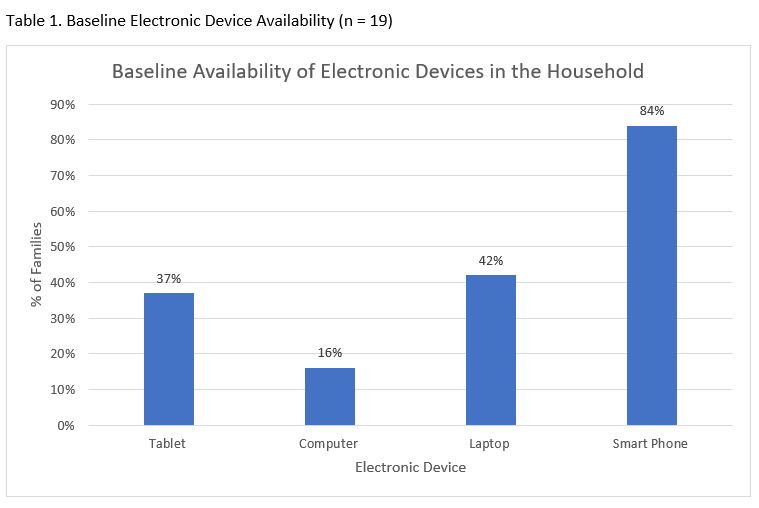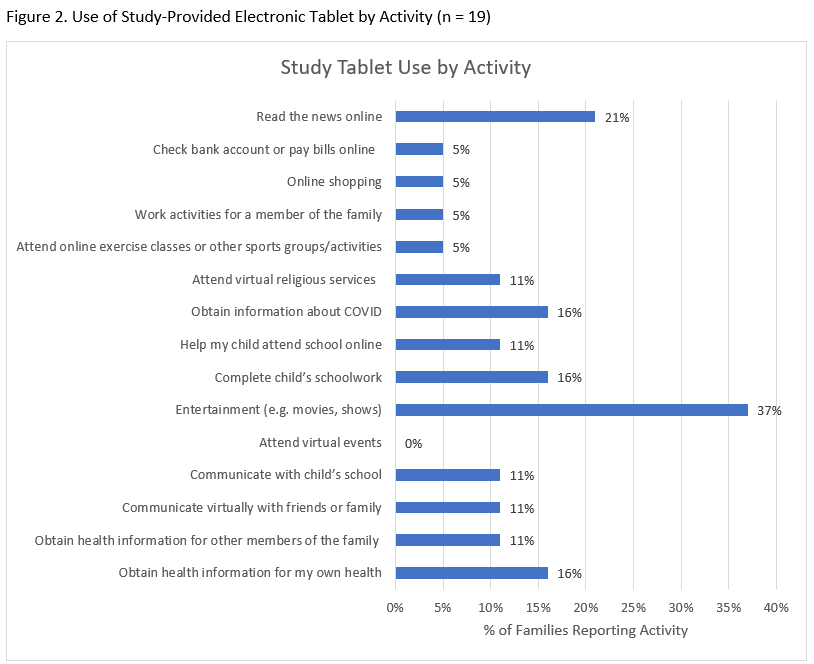Telemedicine/EHR/Medical Informatics
Telemedicine/EHR/Medical Informatics 1
737 - Tech + Touch: A Pilot Study to Facilitate Access to Health Information Technology for Spanish-Speaking Parents
Publication Number: 737.154

Jennifer C. Gutierrez-Wu, MD (she/her/hers)
Primary Care Research Fellow
UNC
Chapel Hill, North Carolina, United States
Presenting Author(s)
Background:
Health information technology (HIT) is important for high-quality care of children, yet Spanish-speaking parents face access barriers that are important to understand to guide HIT interventions.
Objective:
To understand how Spanish-speaking families used a study-provided electronic tablet with Spanish-language resources and explore how electronic tablet provision affected patient portal and video visit use.
Design/Methods:
Prospective, uncontrolled, non-randomized, pilot intervention examining the feasibility and acceptability of facilitated access to an electronic health record patient portal for Spanish-speaking parents. Parent/child dyads were recruited from pediatric specialty clinics in a single academic center. The intervention consisted of receiving an electronic tablet pre-populated with Spanish language health resources, plus a phone call from a culturally and linguistically appropriate navigator to assist with orientation to the tablet and portal. Research assistants administered a post-intervention questionnaire by phone 1 month later. Parents’ self-reported baseline household number of electronic devices, study tablet use by household members, study tablet use by activity on a Likert scale (dichotomized as never/very little vs. moderately/very often/almost always), electronic device use for video visits, and an open-ended question about barriers to portal use.
Results:
Twenty-five parent/child dyads were enrolled; 21 completed the post-intervention questionnaire. Before receiving the study tablet, 84% of participants reported having an electronic device. Smart phones were the most reported electronic device in the home (84%) (Figure 1). Study tablets were most used for entertainment, news, health/COVID information, and children’s schoolwork (Figure 2). The tablet was equally and most often used by a parent or child (75%). 56% of families reported having a video visit; 50% reported using the study tablet for the visit. Of those who did not use the study tablet, 38% reported using a phone and 12% reported using another device. The most reported barrier to portal use was a portal not being set up (33%) and unfamiliarity/difficulty navigating the portal (17%).
Conclusion(s):
Among families with limited baseline HIT access, study-provided tablets were used for health information and communication and a range of activities including child educational needs. Provision of electronic tablets may augment electronic capacity and facilitate connecting to video visits for Spanish-speaking parents. More Spanish-language information, support, and resources are needed to facilitate portal use.

